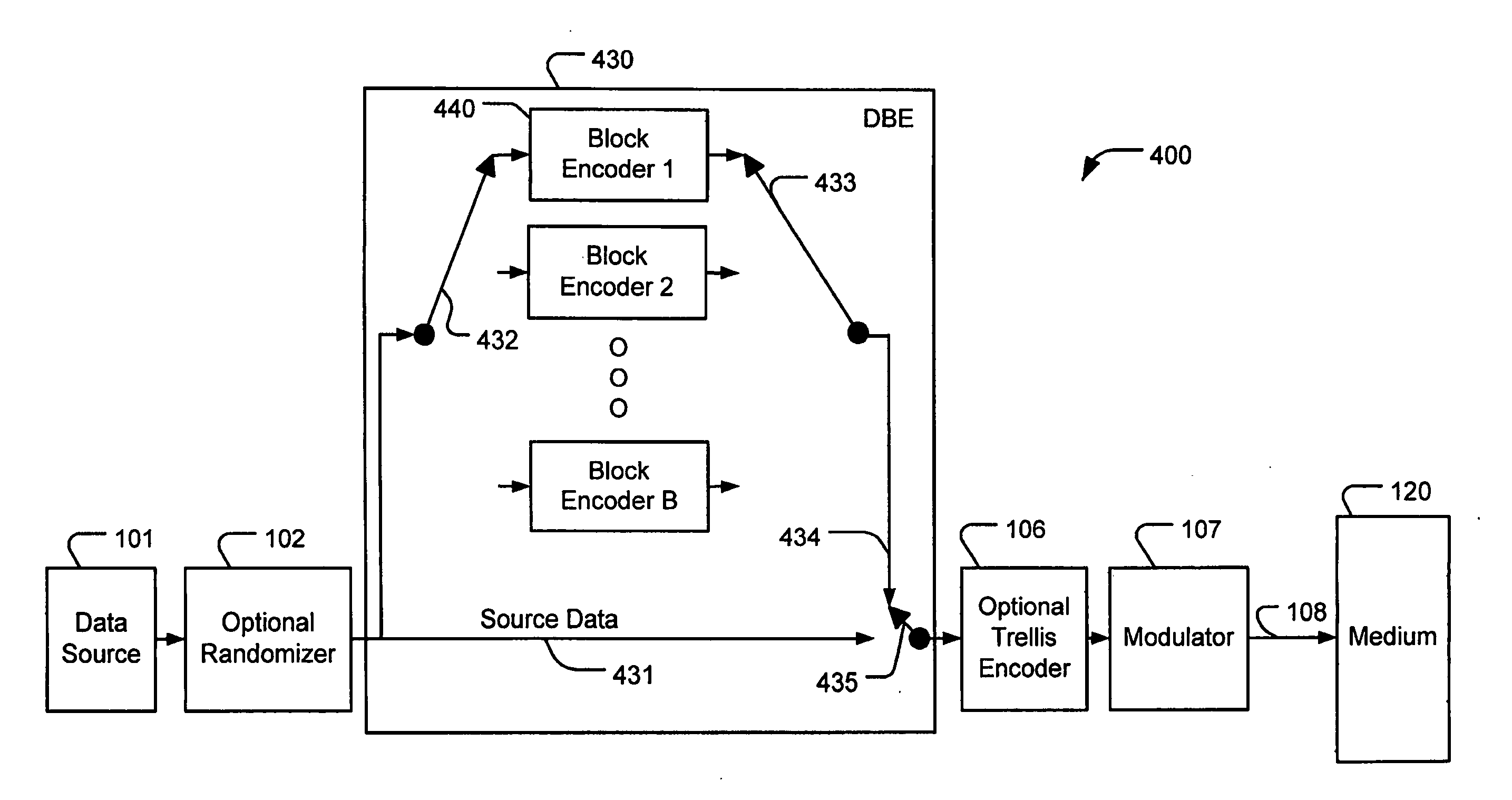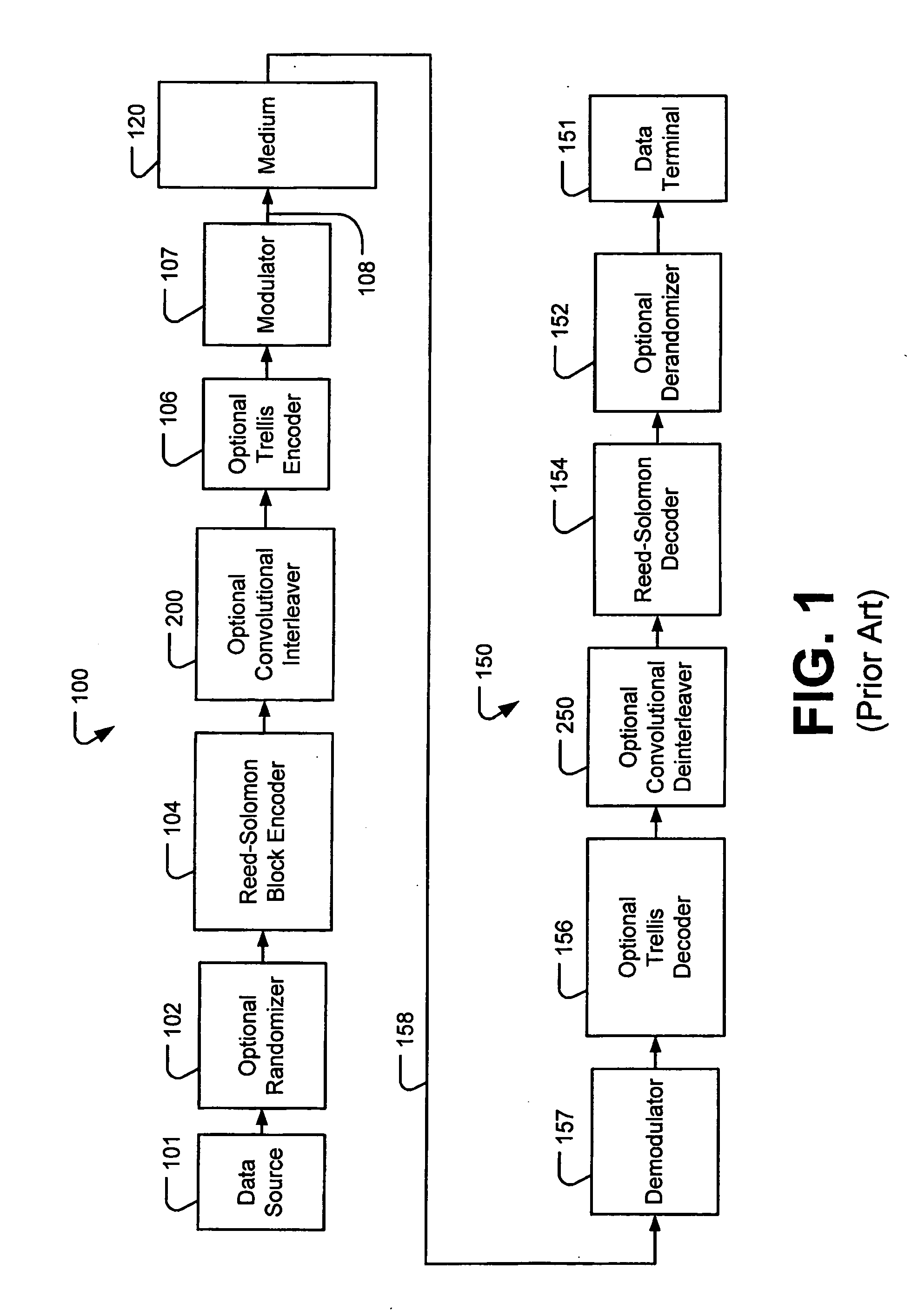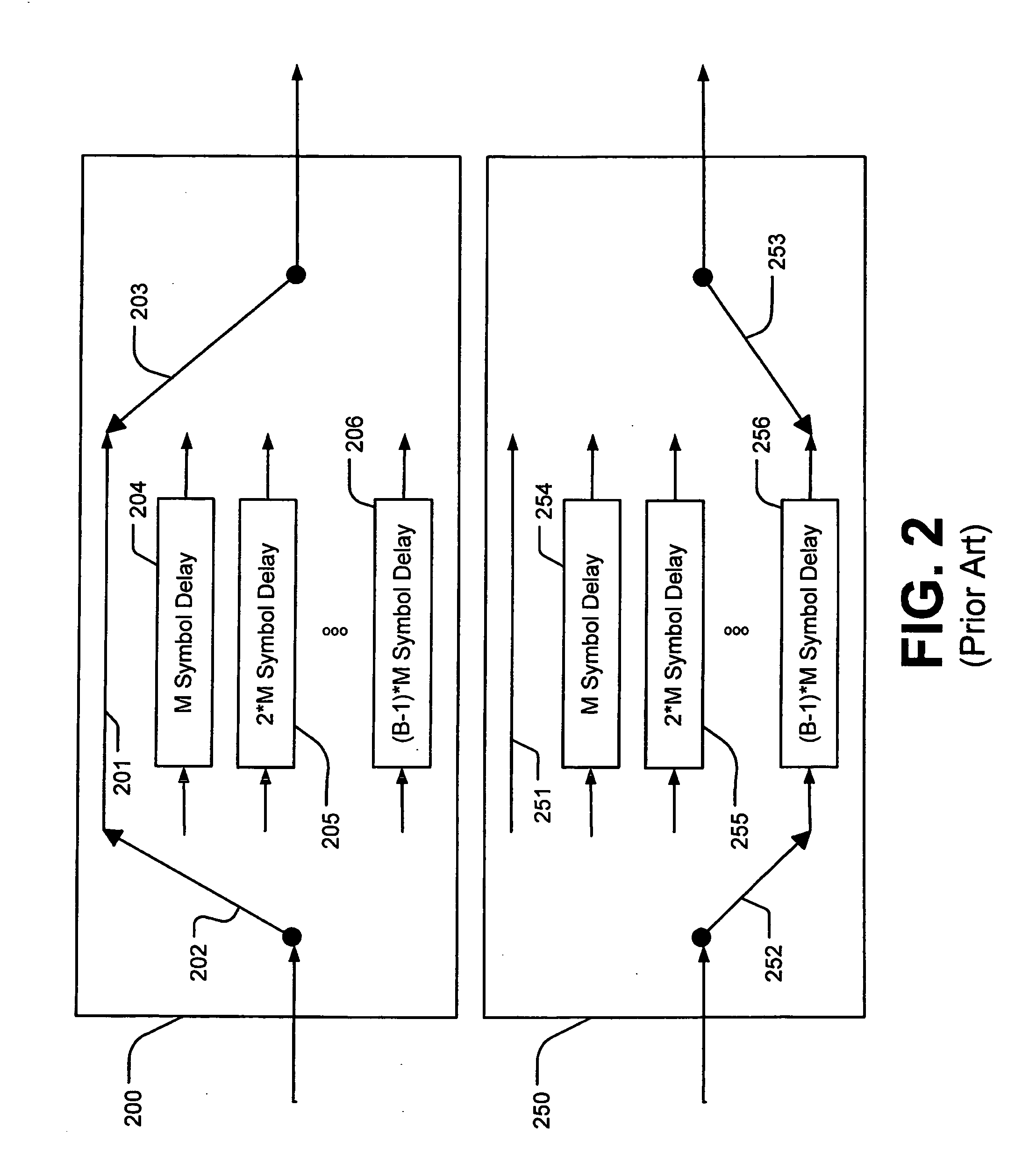Distributed block coding (DBC)
a technology of distributed block and coding, applied in the field of distributed block coding, can solve the problems of requiring a significant delay in the recovery of error corrected data, requiring significant increase in complexity of decoder, and affecting the transmission of arq systems, so as to achieve less delay and lower complexity
- Summary
- Abstract
- Description
- Claims
- Application Information
AI Technical Summary
Benefits of technology
Problems solved by technology
Method used
Image
Examples
first example implementation
[0100]In a first example implementation, the remote DBE 400 or DRBE 600 is designed to transmit original source symbols alternating with interleaved parity codewords.
[0101]In the receiver without a DRBD 730, a signal from medium 120 is routed via signal path 158B to demodulator 157B, then optional trellis decoder 156B. The output of optional trellis decoder 156B on connection 731B contains the original source symbols alternating with interleaved parity codewords with possible errors due to imperfections in the medium 120.
[0102]Optional switch 153B can be opened to discard the interleaved parity codewords. The output of optional switch 153B contains only the original source symbols in their original sequential order. If the remote DBE 400 utilized an optional randomizer 102, then optional derandomizer 152B is used to derandomize the source symbols. The optional derandomizer 152B delivers recovered source symbols to data terminal 151B with the possible inclusion of symbol errors due t...
second example implementation
[0106]In a second example implementation, the remote DBE 400 or DRBE 600 is designed to transmit the interleaved parity codewords on a second channel, while the source symbols are transmitted on a first channel.
[0107]In this case, in connection with the receiver 700 without a DRBD 730, the optional switch 153B is not required. The signal on connection 731B contains only source symbols. The source symbols are processed by optional derandomizer 152B and delivered to data terminal 151B.
[0108]In this second example, the receiver 700 with the DRBD 730 can receive the interleaved parity codewords on the second channel via signal connection 158A. Demodulator 157A and optional trellis decoder 156A recover the interleaved parity codewords and deliver them to optional buffer 759A. Optional buffer 759A allows for simultaneous reception of interleaved parity codewords from one block on the second channel, while receiving source symbols from the next block on the first channel. The interleaved p...
PUM
 Login to View More
Login to View More Abstract
Description
Claims
Application Information
 Login to View More
Login to View More - R&D
- Intellectual Property
- Life Sciences
- Materials
- Tech Scout
- Unparalleled Data Quality
- Higher Quality Content
- 60% Fewer Hallucinations
Browse by: Latest US Patents, China's latest patents, Technical Efficacy Thesaurus, Application Domain, Technology Topic, Popular Technical Reports.
© 2025 PatSnap. All rights reserved.Legal|Privacy policy|Modern Slavery Act Transparency Statement|Sitemap|About US| Contact US: help@patsnap.com



